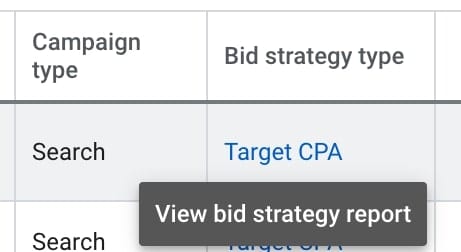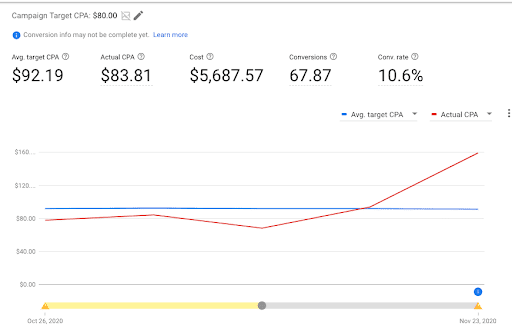MARKETING
What Marketers Need to Understand About Automated Bid Algorithms

In conversations with clients, I find myself using a phrase like, “We can do that, but we need to make sure we grease the wheels of the machine first.” What my Industrial-age jargon actually means is, we need to make sure that we’re not forcing the algorithms to have to relearn in a way that will be detrimental to our performance. I’m going to spare you arguments as to why you should be turning to machine learning in your work in digital advertising, if you don’t know already – plenty of folx out there can help you. If you’re finding the move towards automation difficult, take some advice from Lauren Rosner’s blog, Relinquishing Control Or: How I learned to Stop Worrying and Love PPC Automation.
Below are the most useful elements to understand about how algorithms work in your PPC campaigns.
Target Strategies
Target ROAS as a smart bidding strategy is best deployed across campaigns that are NOT budget constrained and have had at least 15 conversions in the past 30 days. The strategy drives the highest conversion value possible while maintaining a consistent return on ad spend. This strategy does not work well in a hyper-sgemented account structure. Target CPA functions very similarly, except it optimizes toward a CPA value and does not have a minimum conversion volume.
When using target strategies, it’s important to understand what you’re asking the strategy to do:
If you have an aggressive CPA or ROAS target for your industry, let’s say a 20X ROAS, you are asking the algorithm to limit your risk by heavily limiting the number of auctions you’re willing to participate in. Effectively you’re saying: Don’t bid in an auction, unless you’re pretty darn certain you can get me a 20X return. This will cause the algorithm to become very selective and enter into auctions very cautiously. This can result in a drop in impression share, an increase in CPCs, and a general drop in volume. Ironically, in order for automation to work optimally, it needs to have a lot of data to make decisions. So, it’s important to be REALISTIC when setting your targets. Here are a few rules to abide by:
- If you’re switching to one of these automated bid strategies for the first time. Set the initial targets based on your last 30 days CPA or ROAS.
- It takes 7-14 days for the algorithm to recalibrate – so give it time to “settle” and don’t make changes. It will not start to “perform” until it’s learning phase has ended.
- Shift your CPA or ROAS targets in 15%-20% increments at a time. For example, if your last 30 Days ROAS was 5X and you want to move toward a 10X goal, first shift to 6X – let it run for a few weeks, Then shift 20% again.. Avoid aggressive shifts in either CPA or ROAS to not rock the boat.
- Feed your algorithm by layering in audiences. Set these to “Observation” and make bid adjustments accordingly.
If you’re struggling to scale campaign volume, the limiting factor could be your targets. Try increasing CPA or decreasing ROAS targets in 15-20% increments. This will not necessarily result in worse performance. By lowering your bar, you’re effectively telling the algorithm that you’re not as risk averse, and you’re willing to take some chances while trying to achieve your goal. If your accounts experience seasonality, I highly recommend lowering your ROAS and increasing your CPAs at least 1 week in advance to allow the account to scale during times of high seasonality.
Maximize Strategies
Maximize Conversion Value or Maximize Conversions are budget based strategies and should be utilized on campaigns that are regularly limited by budget or spending most of their daily budgets. The minimum criteria for these strategies is 20 clicks/day. In order for Max conversions to operate effectively, ensure that you’re only tracking important conversion actions or set up conversion action sets (linked to PPC hero article). These strategies perform best with broad match type keywords, which allows for more traffic and gives the strategy more data to learn from.
When you’re asking for the maximum, you’re asking the strategy to run out into the auction, and capture as many valuable conversions it can based on the budget provided. It gives no effs about any of your other campaign inputs and does what it wants. For example, these strategies will NOT CONSIDER the following when participating in auctions:
- Device bid adjustments
- Location bid adjustments
- Ad Schedule
- Audience
- Age Rage
- Gender
- HH Income
These strategies also do not care about CPCs. If you have keywords that have set CPC goals, move these to a different campaign, this is not the strategy for these terms. A common misconception when using these strategies is that you have to start with eCPC, then ramp up to Max Conversions. You DO NOT need to do this. In fact, if you do you will cause the algorithm to have to learn twice and recalibrate. You can start fresh campaigns with Maximize conversion or Maximize conversion value bid strategies.
If you’re uncertain if a bid strategy is working for a particular campaign, look to the Bid Strategy Report. This can be found here:
Hover over the Bid Strategy type in the Bid Strategy Type Column and click on it:

The Bid Strategy Report will look something like this and will provide info on how to optimize your strategy. For example, recently actual CPAs have been climbing, so I may want to adjust my target to make sure I can capture more volume.

Even though it’s hard, you have to pad in learning periods for your smart bidding strategies. The general recommendation is 7-14 days with no changes before you start to get meaningful shifts in performance. One of the biggest pitfalls for marketers is pre-emptively calling a strategy ineffective prior to the end of the learning phase. Plan ahead, ensure the expectations are understood up front and when in doubt, turn to your Bid Strategy Report to see how you should adjust.
















